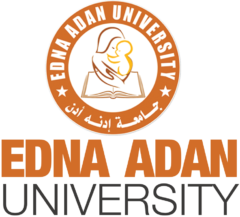Introduction:
Embarking on a journey toward a career in dentistry is an exciting and challenging endeavor. The dentist undergraduate program lays the foundation for future dental practitioners, providing them with the necessary knowledge and skills to excel in the field. In this article, we will delve into the structure of a typical dentistry undergraduate program, outlining the courses, requirements, and practical experiences that aspiring dentists can expect.
Admission Process:
The first step towards pursuing a career in dentistry is gaining admission to a reputable university offering a dentistry undergraduate program. Admission criteria may vary among institutions, but generally, aspiring students are required to have completed high school with a strong emphasis on science courses, including biology and chemistry. Additionally, universities often consider standardized test scores, letters of recommendation, and personal statements in the admission process.
Structure of the Dentistry Undergraduate Program:
Pre-Dental Years:
The initial phase of the dentistry undergraduate program is often dedicated to foundational courses in the natural sciences. Students delve into subjects such as biology, chemistry, physics, and mathematics to build a strong scientific base.
General education courses may also be included to ensure a well-rounded education, fostering critical thinking, communication skills, and cultural awareness.
Core Dental Courses:
As students progress into the core of the dentistry program, they begin to explore courses specific to dentistry. These may include Dental Anatomy, Oral Histology, and Dental Materials. These foundational courses establish a comprehensive understanding of the structure and function of the oral cavity.
Biochemistry and microbiology courses may be integrated to provide a deeper understanding of the biological processes relevant to oral health.
Clinical Training:
The latter years of the program typically involve clinical training, allowing students to apply theoretical knowledge in real-life scenarios. Clinical rotations may cover various dental specialties, including orthodontics, oral surgery, and periodontics.
Students often gain hands-on experience by working under the supervision of experienced dental professionals, treating patients and honing their clinical skills.
Research and Electives:
Many dentistry programs incorporate research opportunities and elective courses. This allows students to explore specific areas of interest within the field, contributing to the advancement of dental knowledge.
Electives might cover topics such as dental public health, forensic dentistry, or advanced dental technologies.
Capstone Projects and Exams:
The culmination of the undergraduate dentistry program often involves capstone projects, where students demonstrate their proficiency in diagnosing and treating dental issues. Additionally, comprehensive exams assess their overall understanding of dental theory and practical skills.
Practical Experiences:
Apart from clinical rotations, students may engage in externships or community outreach programs to broaden their exposure to diverse patient populations and dental practice settings. These experiences enhance interpersonal skills, cultural competency, and a sense of social responsibility.
Conclusion:
Completing a dentistry undergraduate program is a rigorous yet rewarding process that equips individuals with the knowledge and skills needed to embark on a successful career in dentistry. The combination of foundational science courses, specialized dental education, clinical training, and practical experiences prepares graduates to provide quality oral healthcare and contribute to the advancement of the dental profession. Aspiring dentists emerge from these programs not only with a deep understanding of oral health but also with the ability to make a positive impact on the well-being of their patients and communities.
